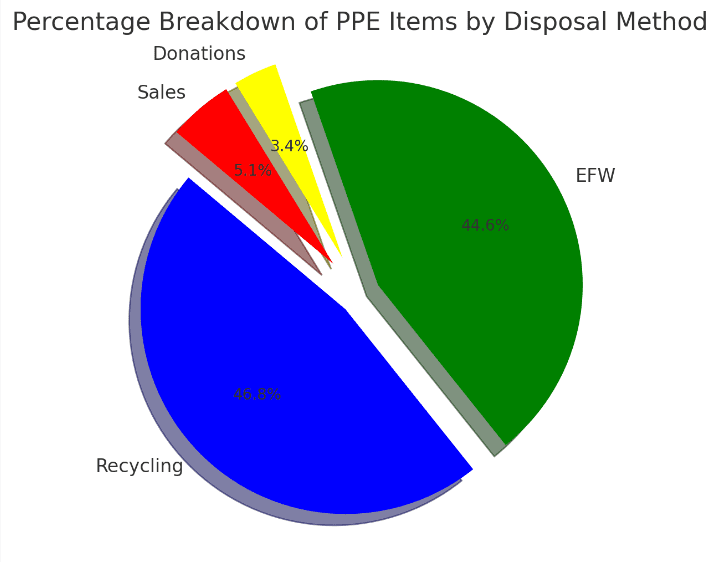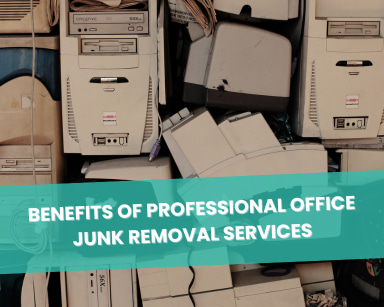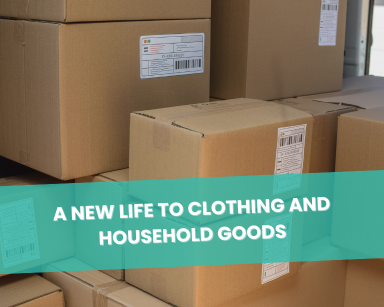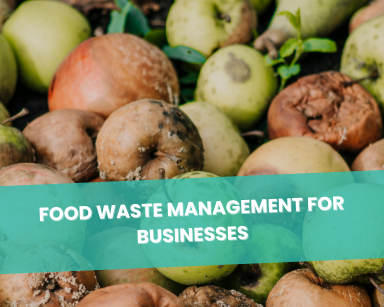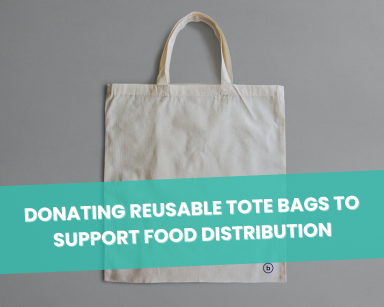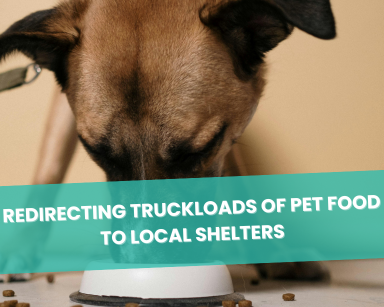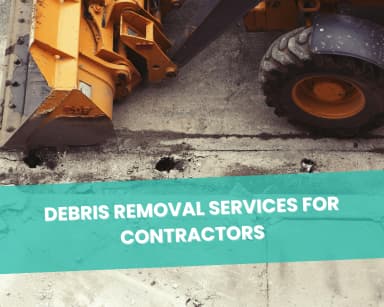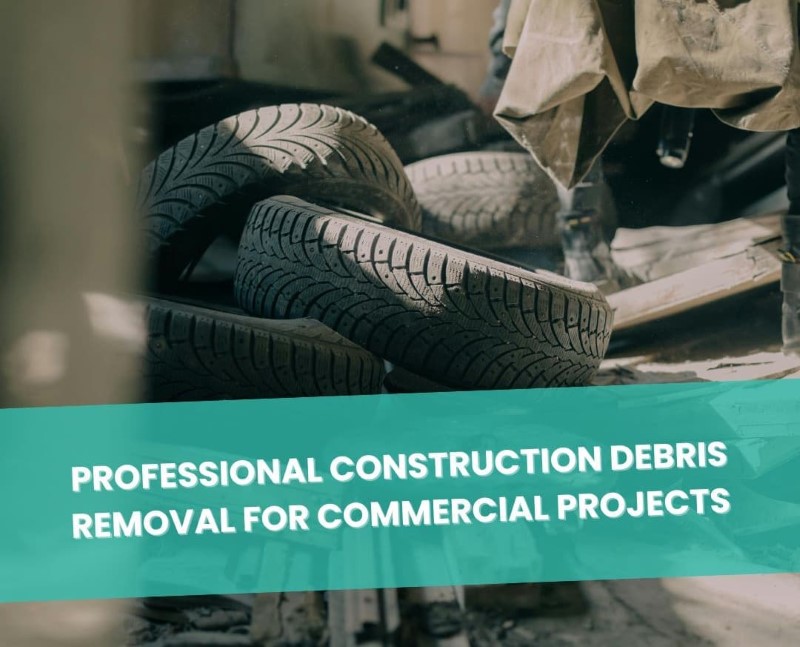Which PPE Can Be Reused? Exploring Sustainable Options
In 2023, the world stands at an environmental crossroads. While the COVID-19 pandemic has receded, the environmental scars it has left behind are deep and concerning. A study from Sage Journals highlights the colossal environmental impact of PPE, emphasizing the urgent need for sustainable solutions. As the demand for PPE soared, so did the waste associated with it. But what if there was a way to turn the challenge of PPE disposal into an opportunity?
What if the very items that protected us could be repurposed to support communities in need? This article delves into the transformative concept of “beneficial reuse” and how it offers a beacon of hope in these trying times.
Table of Contents
The Real Cost of Traditional PPE Disposal:
The aftermath of the pandemic has left us with an environmental dilemma. The surge in PPE usage has led to a significant increase in waste, much of which ends up in landfills or oceans, affecting marine life and the broader environment, as highlighted by ScienceDirect.
- Environmental Impact: The repercussions of improperly disposed PPE are vast, ranging from soil contamination to disrupted ecosystems. The long-term effects of such actions can be detrimental to our planet.
- Economic Implications: The financial burden on municipalities due to increased waste management needs is evident. With billions of PPE items disposed of, the economic ramifications are significant.
- Statistical Insight: The disposal of Personal Protective Equipment (PPE) has been a significant concern, especially considering the environmental and financial implications. A striking revelation from the UK government’s data up to 28 February 2023, reveals that a staggering 3.14 billion items of PPE have been removed from stock, which equates to 269,500 pallets. This removal encompasses various methods such as recycling, energy from waste (EFW) processes, donations, and sales.
The Lesser-Known Lifespan of PPE:
Not all PPE is destined for the trash after a single use. The recent global challenges have prompted healthcare organizations and experts to reconsider the traditional use-and-throw approach, emphasizing the potential of reusable PPE.
Here’s a closer look at some of the PPE materials that can be reused:
-
Eye Protection:
Eye protection encompasses items like plastic safety glasses, goggles, and face shields. These PPE types are typically crafted from easily cleaned and disinfected synthetic materials.
Notably, materials such as polycarbonate (PC) and polyethylene terephthalate (PET) are commonly used. These materials are not only durable but also allow for easy disinfection, making them ideal for repeated use. Source
-
Face Masks and Respirators:
The reusability of face masks largely depends on their type. For instance:
- Cloth Masks: The CDC suggests that cloth masks should be washed after each use. If a cloth mask becomes contaminated, it’s advisable to switch to a different one. These masks can be machine washed or hand washed using a bleach solution.
- Surgical Masks and Respirators: While surgical face masks and respirators like N95 and KN95 can’t be washed, their use can be extended by following proper inspection and storage procedures.
These masks can be worn continuously unless they become visibly soiled, moist, or breathing through them becomes difficult. For storage, placing them inside a clean, sealable container, such as a paper bag or a plastic box, is recommended.
-
Medical Gowns:
Medical gowns can be broadly categorized into:
- 100% Synthetic Gowns: These are disposable gowns made of materials like SMS material, polypropylene, or polyethylene. Dispose of used gowns in biohazard bags, never wash or reuse them.
- Cloth Gowns: These are washable gowns typically made of a blend of natural and synthetic materials, like cotton-polyester. They can be machine washed and dried. However, it’s essential to note that each washing cycle can degrade the gown’s protective characteristics.
Thus, each gown model has a maximum recommended number of washing cycles. Replace the gown with a new one once its limit is reached.
The shift towards reusable PPE not only addresses the immediate need for protective equipment but also presents a sustainable solution, reducing waste and promoting a more eco-friendly approach to safety.
Beneficial Reuse: A Win-Win Solution:
Beneficial reuse offers a solution that not only addresses the PPE disposal issue but also supports communities in need.
- Community Support: Donating PPE to communities in need provides essential tools to those who might not have access otherwise.
- Waste Reduction: Repurposing PPE means less waste. A simple equation with profound implications for our environment.
- Case Study: In regions like Puerto Rico, donated sanitizers from warehouses have provided essential hygiene products to local charities, ensuring community health during challenging times.
A Sustainable Solution by Happen Ventures
While the world grapples with the challenges of PPE disposal, Happen Ventures presents a unique and sustainable solution: Beneficial Reuse.
Instead of the traditional disposal methods, which often lead to environmental degradation, Happen Ventures champions a more eco-friendly approach.
- Community-Centric Approach:
Happen Ventures believes in giving back to the community. The company collects, sanitizes, and redistributes used PPE to those in need.
Collaborating with local organizations ensures proper distribution and training on PPE use. This not only extends the life of PPE but also supports sustainability and benefits communities in need.
- Environmental Benefits:
By repurposing PPE products, Happen Ventures significantly reduces the overall waste generated by businesses. This approach aids in environmental protection, preventing soil and water contamination.
- Compliance and Safety:
Happen Ventures handles all PPE products according to regulatory standards. This ensures peace of mind, industry-standard compliance, and a boost to your brand’s image and ESG Score.
The Process of PPE Sanitization:
Sanitization is the key to ensuring that PPE remains effective after reuse.
- Disinfection vs. Sterilization: While disinfection eliminates many harmful microorganisms, sterilization eradicates all forms of microbial life. Depending on the PPE, one method might be more suitable than the other.
- Hygienic Treatment: Ensuring that PPE remains effective after sanitization is crucial. This involves thorough cleaning and checking for any damages.
- Safety First: The process of sanitization must ensure that the PPE remains uncontaminated and safe for reuse.
Navigating the Regulatory Landscape:
Adhering to regulations is not just about avoiding fines; it’s about ensuring public safety.
- Regulation Compliance: Different regions have specific guidelines for PPE disposal and reuse. Adherence to these is paramount for public safety.
- Avoiding the Rubbish Bin: Using designated disposal containers with plastic liners ensures that contaminated PPE doesn’t end up in regular trash.
- Staying Updated: With ever-evolving regulations, staying informed is paramount. In 2023, new guidelines for PPE disposal emerged, emphasizing the importance of staying updated.
The Role of Businesses in PPE Beneficial Reuse:
Businesses have a significant role to play in promoting beneficial reuse. By leading the way, they can set standards for others to follow.
- Corporate Responsibility: Businesses can set the tone by prioritizing sustainability and beneficial reuse.
- Enhancing Brand Image: Adopting beneficial reuse isn’t just good for the environment; it’s good for business. Companies that prioritize sustainability often see a boost in their public image.
- Economic Benefits: Repurposing surplus PPE products can lead to substantial cost savings for businesses, making it an economically viable option.
Conclusion:
The post-COVID era has brought with it challenges that we couldn’t have anticipated. However, with challenges come opportunities. Beneficial reuse presents a chance to address the PPE disposal issue while supporting communities in need. It’s a solution that’s not just sustainable but also deeply humane. As we move forward, let’s prioritize solutions that benefit us all.

